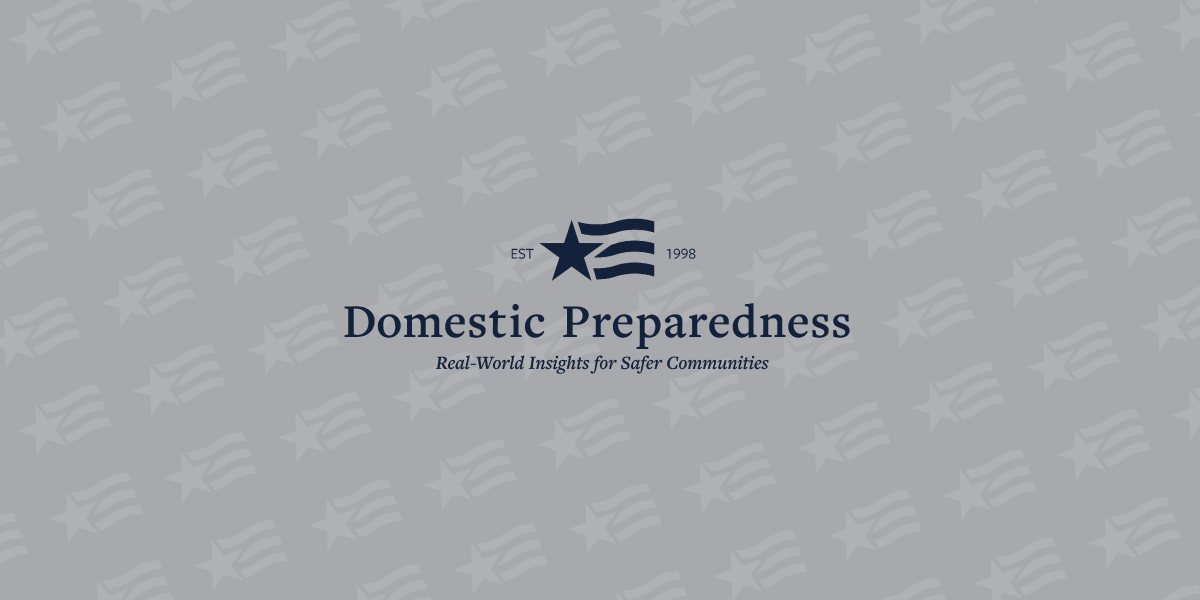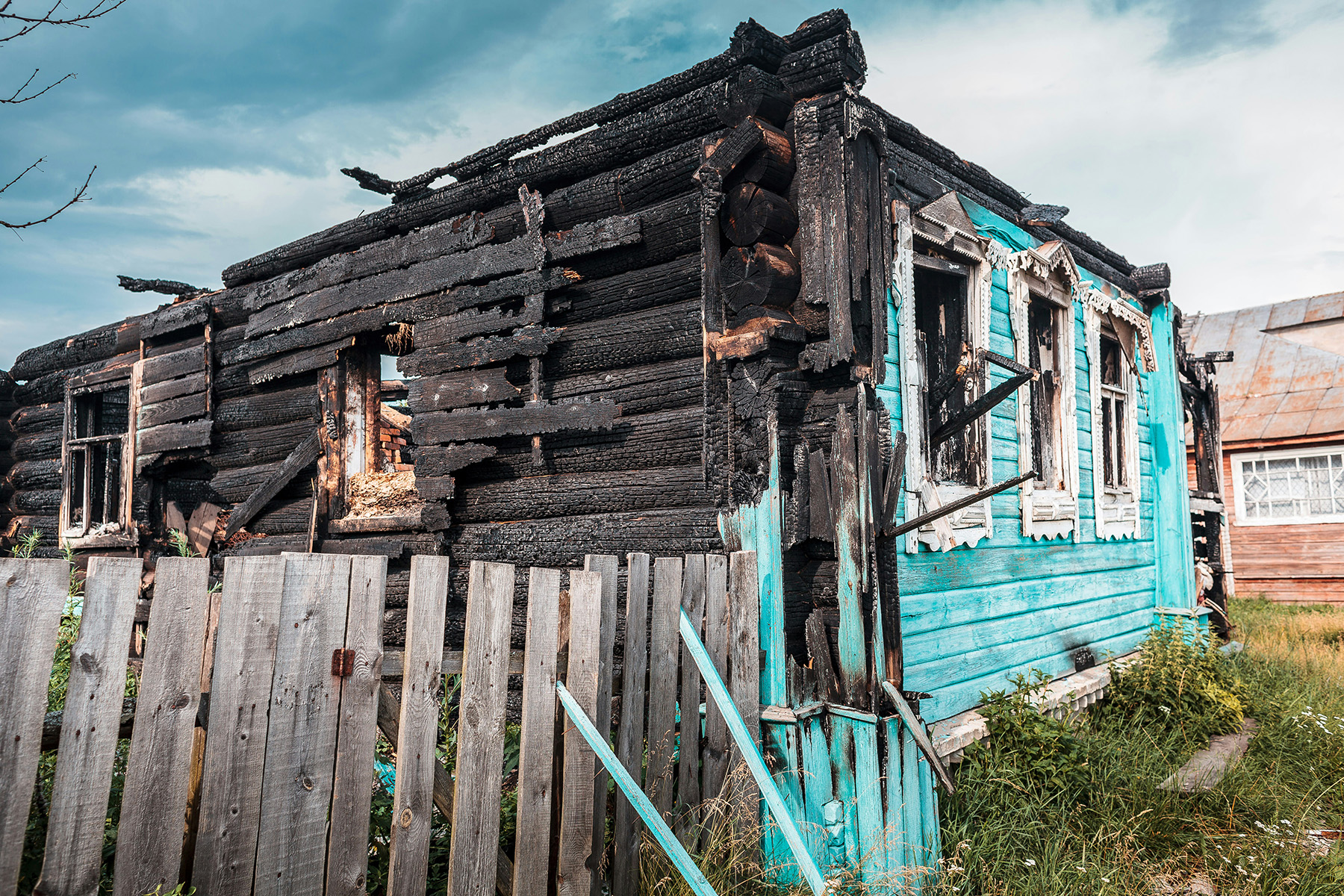Most recently published

U.S. Businesses Respond to Community Needs
Kay C. Goss
February 27, 2008
Three Cheers for three retail giants – WalMart, Home Depot, and Lowe’s, all of which stepped forward to provide urgently needed building materials and the mountains of other supplies required to help restore order in the aftermath of Hurricanes and Rita.

Hospital Emergency Management: The Anatomy of Growth
Theodore Tully
February 27, 2008
Prior to 11 September 2001 the term “emergency management” was more an abstract theory than an operational mandate. Today it is a full fledged profession, particularly in hospitals & other medical facilities, so must be factored into all major planning.

TVA and Protection of the Critical Infrastructure
Adam Montella
February 20, 2008
The Tennessee Valley Authority is basically a huge and highly successful mega-corporation that has to deal with private-sector funding and operational realities while also adhering to federal, state, and local rules and regulations.

Public-Health Planning: Partnerships Work
Steven Harrison
February 13, 2008
The Commonwealth of Virginia provides another best-practices example – this time in the public-health field – of how private-sector organizations can work with one another, and with their government counterparts, before rather than after a crisis erupts.

Gap Analysis – A Long and Winding Process
James M. Rush Sr.
February 13, 2008
Disaster planning is difficult, time-consuming, sometimes boring – but also absolutely necessary. And in the long run it conserves resources, permits the most efficient use of the usually limited medical staff available, and saves a lot of lives.

Anatomy of a Near-Miss Radiation Disaster
Michael Allswede
February 6, 2008
The 2006 assassination of former KGB Colonel Alexander Litvenenko was eventually solved – but there are many questions still unanswered as well as strong suspicions about the operating tactics of Russia’s post-USSR political leaders.

A Burning Question: National Fire Insurance?
Joseph Cahill
February 6, 2008
The almost pandemic outbreak of wildfires in California & other western states last year has aroused interest in a sometimes proposed but never authorized partial solution: enactment of a federally subsidized program to help high-risk communities.

Thomas J. Lockwood, Senior Advisor, DHS Office of Screening Coordination
John F. Morton and Thomas J. Lockwood
January 30, 2008
How does the department manage, and reconcile, the complex and politically difficult task of identification security with privacy needs, site-access requirements, and the National Incident Management System process?

Business and Personal Preparedness – the Key to Collective Survival
Adam Montella
January 23, 2008
Small businesses have big problems – during and in the aftermath of incidents causing damage to their facilities, inventories, and supply chains. The Homeland Security & Defense Business Council recognizes the problem & is doing something about it.

The Management of Mass-Fatality Incidents
August Vernon
January 16, 2008
Reverence, respect, professional expertise, and detailed planning – all are among the essential tools needed by state and local planners to successfully deal with the aftermath of a major disaster causing a large number of deaths and injuries.

Moulage Casts Reality With Mock Injuries
Shannon Arledge
January 16, 2008
An ancient & honorable Renaissance word is put to good use at FEMA’s Center for Domestic Preparedness, where moulage artists replicate broken arms, cuts, bruises, & other injuries to make first-responder training more realistic and more effective.

Regional Hospital Coordination: Common Sense Made Mandatory
Theodore Tully
January 9, 2008
Private-sector U.S. hospitals are finding out that working more closely with one another in the new Age of Terrorism, as now required by law, is not only a prudent policy but also a sound business practice as well.

Force Protection – First, Protect the Protectors
Joseph Cahill
March 5, 2008
Not enough masks and/or medical supplies – those shortages can be overcome. But when there are not enough EMTs or paramedics, or if those who are available are among the early victims, there is no quick and easy way to find replacements.

U.S. Businesses Respond to Community Needs
Kay C. Goss
February 27, 2008
Three Cheers for three retail giants – WalMart, Home Depot, and Lowe’s, all of which stepped forward to provide urgently needed building materials and the mountains of other supplies required to help restore order in the aftermath of Hurricanes and Rita.

Hospital Emergency Management: The Anatomy of Growth
Theodore Tully
February 27, 2008
Prior to 11 September 2001 the term “emergency management” was more an abstract theory than an operational mandate. Today it is a full fledged profession, particularly in hospitals & other medical facilities, so must be factored into all major planning.

TVA and Protection of the Critical Infrastructure
Adam Montella
February 20, 2008
The Tennessee Valley Authority is basically a huge and highly successful mega-corporation that has to deal with private-sector funding and operational realities while also adhering to federal, state, and local rules and regulations.

Public-Health Planning: Partnerships Work
Steven Harrison
February 13, 2008
The Commonwealth of Virginia provides another best-practices example – this time in the public-health field – of how private-sector organizations can work with one another, and with their government counterparts, before rather than after a crisis erupts.

Gap Analysis – A Long and Winding Process
James M. Rush Sr.
February 13, 2008
Disaster planning is difficult, time-consuming, sometimes boring – but also absolutely necessary. And in the long run it conserves resources, permits the most efficient use of the usually limited medical staff available, and saves a lot of lives.

Anatomy of a Near-Miss Radiation Disaster
Michael Allswede
February 6, 2008
The 2006 assassination of former KGB Colonel Alexander Litvenenko was eventually solved – but there are many questions still unanswered as well as strong suspicions about the operating tactics of Russia’s post-USSR political leaders.

A Burning Question: National Fire Insurance?
Joseph Cahill
February 6, 2008
The almost pandemic outbreak of wildfires in California & other western states last year has aroused interest in a sometimes proposed but never authorized partial solution: enactment of a federally subsidized program to help high-risk communities.

Thomas J. Lockwood, Senior Advisor, DHS Office of Screening Coordination
John F. Morton and Thomas J. Lockwood
January 30, 2008
How does the department manage, and reconcile, the complex and politically difficult task of identification security with privacy needs, site-access requirements, and the National Incident Management System process?

Business and Personal Preparedness – the Key to Collective Survival
Adam Montella
January 23, 2008
Small businesses have big problems – during and in the aftermath of incidents causing damage to their facilities, inventories, and supply chains. The Homeland Security & Defense Business Council recognizes the problem & is doing something about it.

The Management of Mass-Fatality Incidents
August Vernon
January 16, 2008
Reverence, respect, professional expertise, and detailed planning – all are among the essential tools needed by state and local planners to successfully deal with the aftermath of a major disaster causing a large number of deaths and injuries.

Moulage Casts Reality With Mock Injuries
Shannon Arledge
January 16, 2008
An ancient & honorable Renaissance word is put to good use at FEMA’s Center for Domestic Preparedness, where moulage artists replicate broken arms, cuts, bruises, & other injuries to make first-responder training more realistic and more effective.
Love Thy Neighbor – But Keep Your Distance
Jerry Mothershead
December 12, 2007
Kill diseases by starving them to death through social distancing! That is probably the most effective and lowest-cost means of containing the spread of diseases carried in microbe-laced weapons of mass destruction.
Dennis R. Schrader, Deputy Administrator, National Preparedness, FEMA
Dennis R. Schrader
December 12, 2007
The new DHS “All Hazards” leader shares his views on the funding and operations of Incident Management Assistance Teams, Emergency Operations Centers, and other components of today’s “forward leaning” Federal Emergency Management Agency.
New Tools to Help with HICS Implementation
Craig DeAtley
December 5, 2007
A job well begun is half done – supposedly. Recently issued Hospital Incident Command System guidelines may not be half the job, but they should make it much easier and considerably less complicated.
The Vile and Versatile Internet: A New Tool for the Cyber-Savvy Terrorist
Joseph Steger
November 28, 2007
The Internet is arguably the greatest cross-cultural bridge in the history of mankind. Its global reach enhances business, research, and personal relationships at the speed of light. In addition, it is a tremendously underestimated and versatile tool now being massively used by terrorists. Its most attractive features include the user’s
A New NIMS Challenge: Train to Compliance, or Train for Competence?
Stephen Grainer
November 28, 2007
Should a state train its first responders to meet federally-mandated “compliance” criteria (and thereby become eligible for future funding), or to develop true/new operational capabilities?
Spores: The Threat of a Catastrophic Attack on America
Neil C. Livingstone
November 28, 2007
The first anthrax terrorist attack on the United States was relatively minor. Now a second attack, exponentially more lethal, is almost certain. When, not if, it happens, the decision makers in Congress & the White House will have only themselves to blame
The Mid-Atlantic All-Hazards Forum – Hugely Successful
James D. Hessman
November 21, 2007
Those who attended the regional conference in Baltimore earlier this month found it eminently worthwhile and developed a long list of solutions to current problems – and an even longer list of new dangers and difficulties lurking just over the horizon.
The Evolution of Devolution
Joseph Cahill
November 14, 2007
Who, when, how, and under what circumstances – those are only a few of the questions that are asked, and must be answered, in political, legal, and sometimes even combat situations calling for a transfer of decision-making command authority.
Damage and Debris – The Difficult Decisions Involved
Kirby McCrary
November 14, 2007
When an earthquake, tornado, or hurricane causes horrendous property damage, the “cleanup crew” (a veritable army of debris-removal workers) faces a number of major challenges, not the least of which is documenting the amount of work done.
Maintaining EMS Equipment in Times of Crisis
Joseph Cahill
November 7, 2007
EMS technicians and other first responders can and do work miracles each & every day. But not if they do not have the right rolling stock or medical systems or other equipment, or enough of it, or if the equipment they do have is not properly maintained.
Friends and Neighbors, Duties and Responsibilities
MaryAnn Warren
October 24, 2007
A timely first-person report from Susquehanna County (Pa.) on the unforeseen (and to some extent unforeseeable) difficulties in coping, personally as well as professionally, with torrential rain, widespread floods, and other disasters.
Glenn Cannon, Assistant Administrator for Disaster Operations, Federal Emergency Management Agency (FEMA)
Glenn Cannon
October 24, 2007
His views on the post-Katrina reorganization mandated by Congress, his directorate’s working relationships with other FEMA branches, and the challenge of coping with both “notice” and “no-notice” disasters and emergencies.
Follow Us
Get Instant Access
Subscribe today to Domestic Preparedness and get real-world insights for safer communities.


